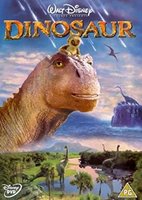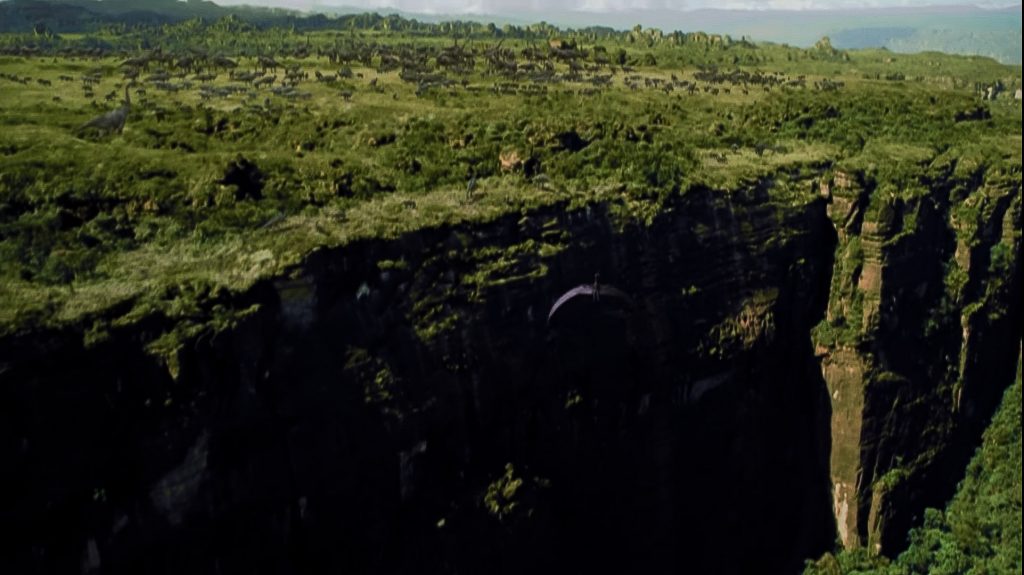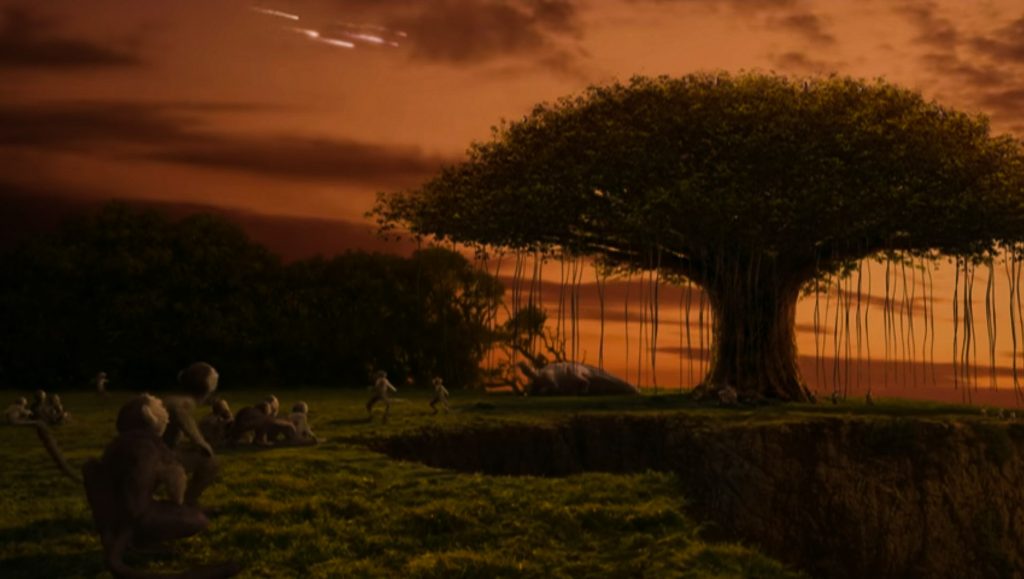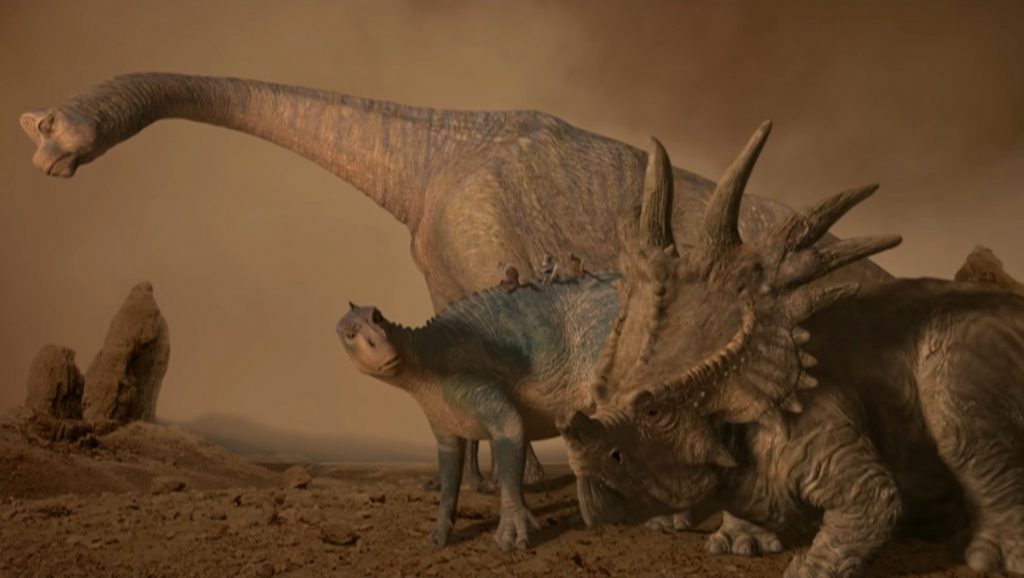Dinosaurs. These reptilian creatures no longer exist side by side with humans, but we have heard of them and grew up listening to their stories as they are depicted in animation and pop culture through shows such as The Flintstones and Jurassic Park. Not much is known about these creatures due to their mysterious extinction event that happened over 65 million years ago. Regardless, scientists and archaeologists continue to study their remains and fossils to uncover how they might have once walked the planet. By rebuilding their skeletons and using technology attempting to recreate these creatures, their appearances continue to intrigue many as they are integrated into documentaries, movies and shows.

Dinosaur is a film that was released by Walt Disney Pictures in the year 2000. This movie features a mix of live footage and CGI animation with brilliant detail, hoping to bring these ancient creatures in the most realistic way complete with their living environments. Throughout the movie, we get to witness many shots showing what might have been the habitats of these giant reptiles, as well as what they might have looked like in action. However, since this movie is situated 65 million years ago, the focal point of the movie is entirely on the dinosaurs and whatever creatures that might have existed alongside them, with no human presence throughout the entire film.
This film was originally intended to be a stop-motion film, with completely different protagonists, supporting cast and antagonists. The original idea was also to have a much darker style to the film, much more akin to documentaries and have the movie end with a Cretaceous-Paleogene extinction event, where all characters eventually meet their demise. Dialogue was also something they wished to avoid, as an animated dinosaur movie known as The Land Before Time featured a lot of dialogue between characters, and it would be important to differentiate from that production. However, in order to appeal to the audience, the movie and its crew was adjusted multiple times before it became the film that was released.
For this film, the audience gets to witness the hardships of the main character before he is even born. While we do get to see the mother of the main character laying the eggs, the entire beginning of the film focuses on the main character’s egg miraculously surviving as the pack of dinosaurs are attacked, and at being forcefully abandoned it gets stolen by an Oviraptor before being tossed around, picked by by a Pteranodon that brings us to an island inhabited by lemurs. The beginning of the movie sets up a beautiful illusion, showing the audience a breathtaking and realistic view of dinosaurs walking the earth. It’s almost like the camera has actually been taken on a helicopter’s eye view to see the ancient habitat, travelling over the pack of dinosaurs and eventually with the Pteranodon.
The illusion of a realistic dinosaur film is however broken when the egg is picked up by a pack of speaking lemurs, who we are introduced to as the main character’s now adoptive family. His adoptive family is composed of several lemurs including the his grandfather Yar (Ossie Davis), his mother Plio (Alfre Woodard), his best friend Zini (Max Casella), and his sister Suri (Hayden Panettiere). They name the hatched Iguanodon Aladar (D. B. Sweeney), taking him in as their own.
There is a quick time skip after the introduction of the lemurs, quickly bringing the audience to when Aladar is grown into a full size Iguanodon, romping around the island with the lemurs for fun. In the conversations between Plio and Aldar, there is a slight reminiscence to the movie of Tarzan, as Aladar the dinosaur is living with an adoptive family of an entirely different species; this which also foreshadows the appearance of dinosaurs later into the movie.
The plot on Aladar is put on pause as the audience witnesses some scenes that concern the lemurs more, displaying a mating ritual between them as they begin to find their mates. However, one of the lemurs called Zini is left alone, Aladar being his best friend quickly heading up to console the lemur. However, the ritual is disturbed quickly as a meteor crashes into the island, catastrophically destroying all life excluding Aladar and his adoptive family that manage to cling onto him as they escape.
Successful in their escape, Aladar and his lemur family finally meet a herd composed of a diversified collection of dinosaurs. The herd is led by an Iguanodon Kron (Samuel E. Wright) and his lieutenant Bruton (Peter Siragusa) towards what they believe to be the Nesting Grounds, which is the only land left unscathed by the meteorite and is still viable for their survival. Aladar befriends a group of elderly dinosaurs that are often left in the dust, including a Brachiosaurus known as Baylene (Joan Plowright) who is believed to be the last of her kind, a Styracosaurus called Eema (Della Reese) and an Ankylosaurus known as Url (Frank Welker).
The rest of the plot then flows on with Aladar acting in his more passionate ways, trying to help the elderly dinosaurs that Kron constantly tries to leave behind due to his believing of the slower, weaker dinosaurs lessening their chances of survival by slowing the herd’s movement down in looking for the nesting grounds. However, in Aladar’s attempts to help the elderly dinosaurs and finding a new, less dangerous pathway for the nesting grounds he wins the favor of Neera (Julianna Margulies) who is Kron’s sister, as well as Bruton. Eventually he earns the favor and respect of the herd as well, leading them to the nesting grounds without coming to harm from the Carnotaur, while Kron meets his demise in his stubborn insistence of taking the more dangerous route to the nesting grounds. The film finally ends with Plio’s narration, her closing line of “But one thing is for sure. Our journey is not over, we can only hope in some small way our time here will be remembered.” This brings the movie to an end.
Though this film puts dinosaurs and lemurs as its central characters, there are a lot of features that make this film unique and to some extent, a bit odd. One of the features it actively uses would be its use of anthropomorphism. Anthropomorphism is a trope very commonly used in Disney’s animal centric films; probably to appeal to Disney’s target audience which is composed largely of children and families. The use of anthropomorphic animals helps to stimulate more emotive responses from the audience, since from watching the ways the characters act the audience begin to feel some sort of emotional link towards the characters. Throughout the film, many of the herbivores and the lemurs, the iguanodon especially are depicted to have very human-like facial expressions. Many camera angles are pictured to zoom in solely on the characters, relying heavily on their facial expression to portray their current emotion coupled with their dialogue.
On the contrary, the antagonist of the film, the Carnotaurs, have no expression and act much like beasts constantly pursuing the protagonists. Furthermore, they display movement that is influenced by their current emotion, something that is very human-like. One example of this is when the characters manage to find water, the leader of the herd acts very dismissive towards Aladar. His actions in a way display his personality as he shoves Aladar aside to make room for other dinosaurs. The lemurs being quite similar to monkeys are also depicted with very human-like behavior throughout the film. Some examples of anthropomorphism through the lemurs include the way Plio would stroke Aladar while she spoke, almost like the way a human would stroke a beloved house-pet. Another example would be during the mating ritual, when the female lemurs would put flowers behind their ears, the way people like to put makeup on or accessories to appeal to the opposite sex.
Many anthropomorphic features can be picked out in the analysis of the characters, but at the same time it reveals the problem where the movie and its plot cannot progress without the anthropomorphism in its characters. While the movie attempts to depict the dinosaurs realistically in their habitats, the anthropomorphism and dialogue breaks the illusion of reality, contradicting itself in a manner by including the plot and dialogue ultimately. Could this movie have worked without the anthropomorphic characters? If anthropomorphism were to be taken out, it would be a much more difficult story to execute in a way, or perhaps it would’ve turned into a documentary about dinosaurs.
Aside from anthropomorphism, the movie does hold some factual inconsistencies throughout the film. By making use of the environment in the real world, the habitat the dinosaurs are depicted to be in would never have been realistic, since plant species would have been very different in the past in order to sustain such large herbivores. The choice of dinosaur species also displays many problems, as according to research by multiple archaeologists many of these species could not have co-existed at the same time. While a majority of the species, including the Iguanodon, the Carnotaurus, the Styracosaurus, the Oviraptor etc. all were classified to co-exist in the Late Cretaceous period, some species could not have existed in the same period. One example would be the Brachiosaurus, sauropods having already declined and died out by the end of the Jurassic period. They could not have co-existed nor survived in the Late Cretaceous with the appearance of strong therapods as well as improved herbivorous dinosaurs who would have thrived much better alongside new species. Another species that was depicted to exist in the wrong era would be the lemurs. While the lemur is very commonly seen in the modern era existing with multiple different species thriving in different parts of the world, it only started to branch off from primates and begin it’s evolution less than 63 million years ago. These historical inaccuracies further display the unrealistic setting of the movie, despite its attempts to appear as a realistic dinosaur movie.
Overall, Dinosaur was a very entertaining movie. Although it had inaccuracies and was at its core quite unrealistic despite its realistic appearance, it was a breakthrough in technology and allowed the audience to witness breathtaking scenery and dinosaurs in action. Aside from the scenes with dinosaurs, its sequences also shocked the audience, allowing the audience to see what might’ve happened that led to the extinction of the dinosaurs i.e. the meteorite destroying the island of the lemurs. It also displayed quite violent scenes of carnivores attacking herbivore, which is quite different from the attempts at much more child-friendly films nowadays which would steer clear of such violence. However, this film does satisfy the curiosity of many as the audience gets to take a glimpse at a world far beyond our imagination, existing over 65 million years ago.


